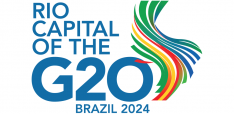The $138.5 Billion Question: When Does Foreign Aid Work?
Andy Sumner argues that it may be more useful to ask when aid works, not whether.
The policy debate around whether foreign aid—now $138.5 billion a year—works has been polarized between the “Oh yes it does” camp and those who respond “Oh no it doesn’t.” (Christmas pantomime anyone?)
Claims that aid is responsible for impressive improvements in human development over the past couple of decades are clearly not credible. Yet, equally difficult to sustain are claims that aid has been entirely useless. It’s more useful to ask when aid works, not whether.
Scholarly studies have been doing just that for at least a decade. So Jonathan Glennie (now director of policy and research at Save the Children) and I thought we’d take a look and review the state of thinking on aid effectiveness. Specifically, we looked at the cross-country, peer-reviewed, econometric studies that focus on assessing if or under what conditions aid is effective in achieving its stated outcomes, particularly those related to economic growth or social development. The resulting CGD Policy Paper is here.
Before reaching any conclusions, however, we had to overcome some definitional challenges:
What does ‘work’ even mean?
Take growth, for example. Does aid ‘work’ when growth is higher than it would have been without aid? Or is it establishing the preconditions for self-sustained growth without aid in the future? Or is it a contribution to growth that represents value for money (however that is defined)?
In our paper we are constrained by how the literature has approached this question. We thus take aid ‘working’ or ‘effective aid’ to mean aid that contributes to or is associated with, even if only modestly, positive development outcomes such as economic growth and social development. Of course, the lack of a counterfactual is the biggest barrier to ever knowing for certain the impact of aid.
What counts as aid?
Aid is delivered in many forms and has diverse and complex objectives and motivations. It is quite plausible and, given the copious amounts of conflicting opinions on the subject, also probable that different types of aid achieve (or don’t achieve) different objectives.
Most of the recent econometric studies our paper reviews use effective development assistance, which is an aggregate measure of aid flows that includes all grants and grant equivalents of loans. In other words, it’s a measure of concessional transfers to developing countries that emanate from governments of donor countries (funded by taxpayers of these countries) and that at least in principle or in claimed intent aim to contribute to development.
So, what did we find?
First, the majority of studies on aid are positive—but the impact of aid is often modest. Of course there are numerous methodological caveats as we discuss though suffice to say a review of studies puts aid skeptics in the minority at the moment.
Regarding social development, there are relatively few studies, so caution is required. Still, the cross-country education aid studies and monetary poverty studies are positively associated with growth, and health aid studies, while more mixed overall, are also mostly positive.
However, emerging from all of the reading was one fact—the conditions under which aid works are mentioned in most studies. We developed a way of mapping this as: (1) the country context, meaning the characteristics of the recipient country and national government policies; and (2) aid management, meaning the characteristics of aid and donor policies and practices.
We then took a look to see where we might say there are signs of convergence or signs of divergence or insufficient studies to make any judgment.
We also linked our discussion to the other aid effectiveness literature—the policy literature of Paris/Busan and so forth.
We found four factors likely to improve aid effectiveness suggesting donors might want to look at each of the as country level.
First, aid levels: aid is more likely to work in the correct dosage but is ineffective if too high or too low.
So more aid is good for the world’s poorest countries right? Not necessarily so. One needs to consider existing levels of aid. Aid is likely to have diminishing returns as it grows relative to the size of the economy and those returns can even turn negative. In addition, at low levels, aid may have little impact on growth. But there are differences in the level below or above which aid is ineffective in promoting growth.
This is an important finding not because it is surprising—it shouldn’t be—but because of the neglect of this critical element of aid effectiveness in policymaking circles. In the most important aid effectiveness process (the Paris agenda and its successor meetings) the issue barely merited a mention.
Second, domestic political institutions: aid is more likely to work if the institutions are in place—for example, political stability and not too much decentralisation.
Also unsurprising is that some of the papers we review emphasize the role of domestic political institutions. Although an article of faith for many for at least a decade, the type of domestic political institutions likely to increase aid effectiveness is less clear. Political stability and levels of decentralization are two issues the evidence points towards. The difficulty here is whether donors can do much about these or accept working in contexts with certain kinds of institutions is likely to be less effective.
Third, the aid composition: aid is likely to more effective in certain sectors and aid objectives and time horizons matter a lot.
The effectiveness of aid depends on its objectives, sectors, modalities, and time horizons—essentially what the aid is intended for. For example, aid effectiveness for growth is improved if aid focuses on ‘developmental aid’ (i.e., aid that seeks to promote development objectives such as growth) or if the composition of aid is directly aimed at affecting growth (e.g., building roads, ports and electricity generators, supporting agriculture).
Additionally, budget support (or ‘program’ aid) and project aid for real sector investments is likely to be more effective for growth than other types of aid. But caution is required as aid in sectors like health and education may only affect growth after a long period of time and thus may simply be difficult to detect rather than be non-existent.
Fourth, aid predictability and concentration: aid is likely to more effective if it is not volatile and fragmented.
While our finding on aid levels is nearly absent from dominant aid effectiveness debates, our finding on aid volatility is ubiquitous in them. Reducing aid volatility and fragmentation has been a key feature of the Paris agenda. Unfortunately, this focus has not led to significant improvements. According to the 2011 Paris Declaration Monitoring Survey, only 43 percent of aid was predictable in 2010 (compared to 42 percent in 2005) and there was a similarly disappointing increase in the use of common arrangements, joint donor missions, and joint analytical work.
And finally, two big unknowns
There are two areas where there is little convergence in the evidence, despite oft-cited claims to the contrary.
The first is goodie-goodie—read orthodox— macroeconomic policy. Bill Easterly’s 2004 rebuttal placed a large question mark over a previous core belief in official development circles that aid supports growth when the recipient country is implementing certain macroeconomic policies generally described as ‘good’ or orthodox policies. Now there is no consensus. There are studies on both sides of the fence.
And the second is that there is no consensus that grants are better than loans (or vice versa) for aid effectiveness. This is not to say that in different contexts grants may be more appropriate than loans, or vice versa, simply that there no generalizations can be made.
What to conclude?
So what to conclude from all of the above? First you just read in four or five minutes a 45 page paper, so nuances get lost. Further, methodological contentions still remain, so don’t get too carried away. But it’s clear that despite the yes-it-does, no-it-doesn’t character of the public policy debate, the scholarly debate has moved sufficiently beyond that pantomime to tell us more about when aid is more likely to work. So while we and CGD pals would be first to say that development is about a whole lot more than aid, we can say that shifting the debate from whether aid ‘works’ to when aid works and how it can work better would contribute to better aid policy decisions in the real world, move away from mostly theatrical claims and counterclaims, and might even serve to reinvigorate global support for aid. We hope our paper lays some of the groundwork for that to happen.
This post first appeared on the CGD blog.


